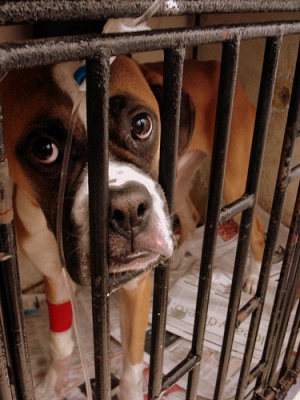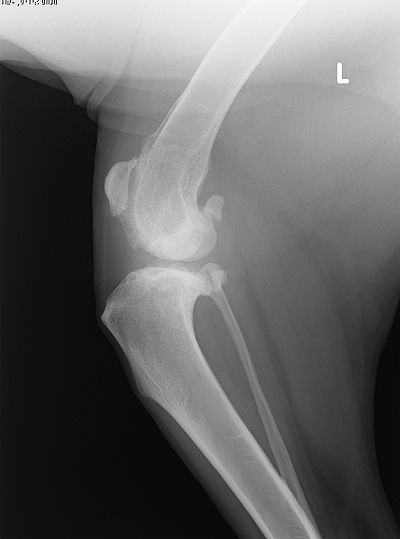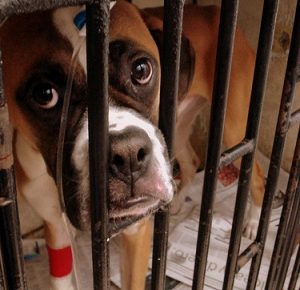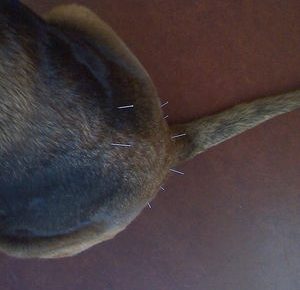
Hypothyroidism is one of the most common ailments in dogs. It is caused by a deficiency of thyroid hormones. Hypothyroidism is an auto-immune disease in which the body sees the thyroid gland as a foreign threat.
The dog’s thyroid gland is divided into 2 lobes, butterfly shaped, which are on either side of the trachea below the larynx. The hormones T3 and T4 produced by the thyroid regulate many body functions such as growth, metabolism, reproduction, ability to fight infection and more.
Symptoms of hypothyroidism include weight gain, lethargy, depression, unwillingness to exercise or play, intolerance of cold, slow heart rate, dryness and loss of hair, skin thickening, chronic infections. Hypothyroidism sometimes causes behavioral changes in your dog such becoming snappy. There can also be facial changes – furrowed brow, cleft above the eyes.
The condition affects both males and females. Dogs usually develop hypothyroidism between the ages of 4 and 10 years old. Breeds which are often affected are Cocker Spaniels, Irish Setters, Greyhounds, Labrador Retrievers, Golden Retrievers, Doberman Pinschers.
The disease is also more common in spayed females. A decrease in sex hormones can require the adrenal glands to work harder. This can affect the thyroid gland, so both adrenals and thyroid should be checked by the vet.
Diagnosis is made through blood tests. Treatment is generally with oral medications administered for the life of the dog. The medications have no associated side effects, but the dog should be monitored with regular blood testing.
If your dog shows any unusual behavior or symptoms such as panting, excessive drinking or urination, appetite increase, diarrhea, check with your vet. Early detection of a problem has a more positive outcome.



